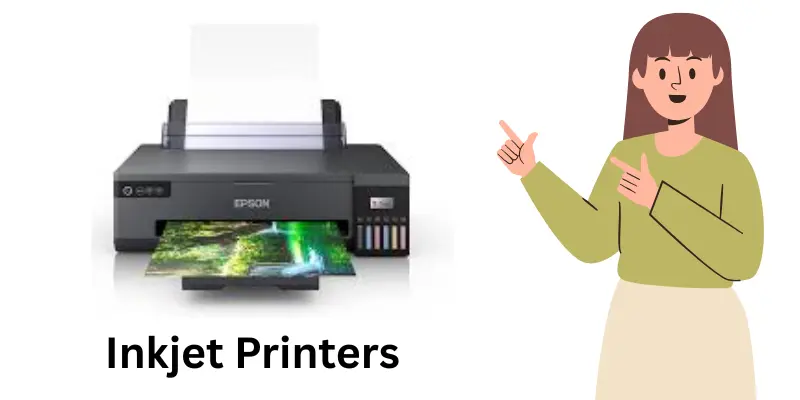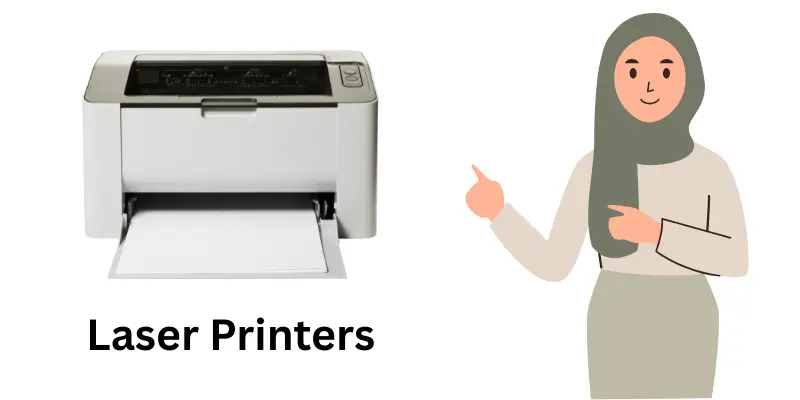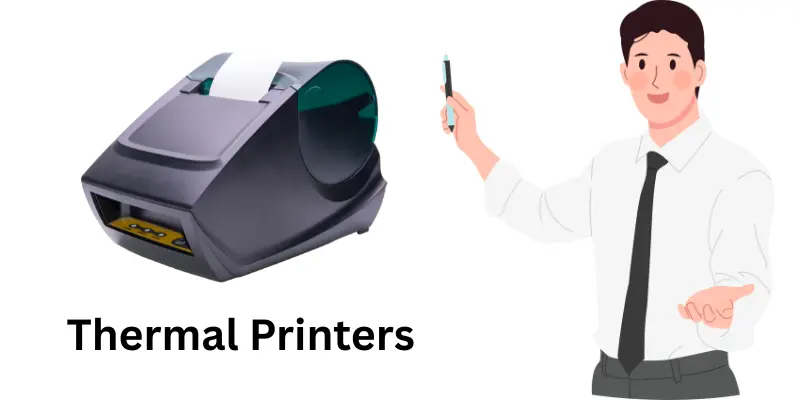What is a Printer
Published: 18 Jul 2025
Imagine rushing to print a concert ticket minutes before leaving home or helping a child print a colorful school project. Printers make these moments possible by transforming digital files into tangible objects you can hold. This article delves into what a printer is, explores various types of printers, explains how they function, and offers tips for selecting and maintaining one. Curious about how printers bring your ideas to life? Let’s find out!
What is a Printer?
A printer is a computer peripheral that creates a hard copy of a digital file. It’s an electronic device that takes text or images from a computer system or digital camera and puts them on paper or other materials. As an output device, it transforms digital data into printed matter you can touch and use.
Printers are super helpful. They’re used at home, in offices, and for fun projects. For example, someone might print a recipe from a website to use while cooking. Or they might print a photo from a digital camera to frame. Printers bridge the gap between the digital and physical world, making them essential in daily life.
Why are printers so helpful? They allow people to share ideas, create documents, and even design physical objects. Whether it’s a homework sheet or a business flyer, printers make it happen.
History of Printers
Printers have evolved over centuries, turning digital files into hard copies. Ancient Chinese monks employed woodblock printing by 200 AD, carving text into wooden blocks to create printed materials. Around 1041, Bi Sheng invented movable type, making printing faster. In the 1440s, Johannes Gutenberg’s printing press with metal type revolutionized bookmaking, as evidenced by the printing of the Gutenberg Bible in 1455. By the 19th century, Ottmar Mergenthaler’s linotype machine sped up newspaper printing. Charles Babbage designed an early computer printer in the 1820s for his Difference Engine.
In 1968, Epson’s EP-101, a tiny electronic device, marked the start of modern printers. Dot matrix printers, like Centronics’ 1970 model, used ink ribbons for text. In 1977, Siemens introduced inkjet technology, which sprays ink droplets to produce high-quality prints. Gary Starkweather’s laser printer at Xerox in 1969 utilized toner cartridges and a laser beam, paving the way for the HP LaserJet in 1984. Thermal printers, which use special paper, were introduced in 1981 for printing barcodes. Charles Hull’s 3D printer, introduced in 1983, enabled the creation of physical objects, marking the beginning of 3D printing.
Today, multifunction printers combine printing, scanning, and faxing. Wireless connectivity options, like USB ports or Wi-Fi, make printing easy. Printer manufacturers like HP and Canon offer high-speed, high-quality printers for home use, office environments, and small businesses, despite challenges such as paper jams.
Major Types of Printers
Printers come in different types, each designed for specific tasks. Here’s a breakdown of the major types of printers and what they’re best for.
- Inkjet Printers
- Laser Printers
- All-in-One Printers
- 3D Printers
- Thermal Printers
1. Inkjet Printers
Inkjet printers use inkjet technology to spray tiny ink droplets onto paper. They produce high-quality prints, making them ideal for both home use and professional photo printing. These printers utilize ink cartridges and are suitable for creating colorful designs.

For example, Emma wants to print vibrant birthday cards. She uses an inkjet printer to get bright, high-quality photos. Inkjets are affordable and ideal for small print jobs.
2. Laser Printers
Laser printers utilize toner cartridges and a laser beam to produce prints. A light-emitting diode or laser draws the image on a print drum, and toner particles stick to it using electrical charges. The toner then transfers to paper for sharp, high-speed prints. These printers are perfect for office use and text documents.

Take Alex, who owns a small business. He prints 100 invoices daily. His HP LaserJet, a type of color laser printer, efficiently handles these print jobs. Laser printers are great for business use and high-volume printing.
3. All-in-One Printers
All-in-one printers, also known as multifunction printers or multifunction devices, do more than just print. They scan, copy, and sometimes act as fax machines. They’re ideal for home offices or small businesses needing versatile computer hardware.

For instance, Maria runs a home office. She uses her all-in-one printer to scan a contract, copy it, and print a final version. It saves space and handles multiple tasks.
4. 3D Printers
3D printers are special. They use 3D printing to create three-dimensional objects by layering materials, such as plastic. These printers are great for crafting, prototyping, or making physical objects.

Consider Tom, a hobbyist. He uses a 3D printer to make a custom toy for his kid. 3D printers are exciting for creative or industrial projects.
5. Thermal Printers
Thermal printers utilize thermal printing technology, along with specialized paper, to produce images or text. They’re fast and don’t require ink or toner, making them ideal for label or barcode printers. Thermal transfer methods are standard in retail.

For example, a store cashier prints a receipt using a thermal printer. It’s quick and ideal for small, text-only prints, such as tickets or labels.
Tip: Select a printer that meets your specific needs. Want colorful photos? Choose an inkjet. Need fast office printers? Go for a laser. Need labels? Try a thermal printer.
How Printers Work
How does a digital file become a printed page? Printers follow a simple process. A computer sends a file to the printer using a printer driver, which is software that instructs the printer on how to process the file. The printer processes the file and creates a hard copy.
Each type of printer uses a different printing mechanism. Inkjet printers spray ink droplets through a printhead. Laser printers use toner and a laser to form precise images. Thermal printers heat special paper to print. Older printers, such as matrix printers or daisy wheel printers, use an ink ribbon to print characters, but these are less common today. LED printers, like laser printers, utilize light-emitting diodes for printing.
Think of inkjet printing like painting with tiny dots. Laser printing is like stamping a perfect design. Thermal printing uses heat to mark special paper. Each printing method creates high-quality prints in its own way.
Common Uses of Printers
Printers have tons of uses, from everyday tasks to special projects. Here are some examples:
- Personal Use: People print photos, tickets, or school assignments for personal use. A student might print a science project.
- Business Use: Businesses print reports, invoices, or marketing materials. A small business might print flyers for a sale.
- Specialized Use: Printers create labels, barcodes, or 3D objects. A craft store uses a barcode printer for price tags.
Printers are versatile computer hardware. They are helpful for both home use and office environments, as well as for creative tasks. Want to print custom stickers? A photo printer works great. Need a barcode for a product? A thermal printer is the way to go.
Tip: Utilize free online tools like Canva to create engaging printables, such as posters or cards. It’s a simple way to get creative with your printer.
Choosing the Right Printer
Choosing a new printer can feel overwhelming, but it’s easier with a plan. Here are key things to think about:
- Printing Speed: Laser printers are faster than inkjets, making them great for busy offices.
- Print Quality: Inkjet printers are best suited for high-quality photos. Lasers excel at sharp text.
- Connectivity Options: Look for a USB port or Wi-Fi. Wireless printers let you print from phones or laptops.
- Cost: Check the price of toner cartridges or ink. Inkjets can have a higher cost for ink, but toner lasts longer.
- Type of Printer: Match the printer to your needs. Home users might like inkjets or all-in-one printers. Businesses may prefer laser or thermal printers.
For example, a student might pick an affordable inkjet for occasional printing. A small business owner might opt for a color laser printer due to its high-speed and high-quality printing capabilities. Specialty printers, such as dye-sublimation printers or solid ink printers, are great for photo printing but can be expensive.
FAQ:
- What’s the difference between inkjet and laser printers? Inkjets use liquid ink for colorful prints. Lasers use toner for fast, sharp text.
- Are wireless printers better? They’re handy for printing from multiple devices, but they require a strong Wi-Fi connection.
Tip: Compare the costs of ink or toner before making a purchase. Some printers are inexpensive, but their supplies can be costly. Look for energy-efficient models to save money.
Printer Maintenance and Troubleshooting
Printers need care to work well. Regular maintenance prevents printing problems. Here are some easy tips:
- Clean the Printhead: Run a cleaning cycle to avoid clogs, especially for inkjets.
- Use the Right Paper: Prevent paper jams by using paper that is compatible with your printer.
- Update Drivers: Download the latest printer driver from the printer manufacturer’s website.
Common issues include paper jams, blurry prints, or connectivity problems. For example, if a printer displays “offline,” check the USB port or Wi-Fi connection. Blurry prints might mean low ink or a dirty printhead. A cleaning cycle can fix it. Some printers use Printer Control Language or soft fonts for better performance, so check for updates.
FAQ:
- Why is my printer offline? Check the connection or restart the printer and computer.
- How do I fix blurry prints? Run a cleaning cycle or check ink/toner levels.
Tip: Visit the printer manufacturer’s website for troubleshooting guides. They often have step-by-step fixes for common issues.
Advantages and Disadvantages of Printers
Printers are essential computer peripherals that turn digital files into hard copies, making them vital for home use, office environments, and small businesses. They create everything from high-quality photos to text documents, but they also come with challenges. Below is a concise list of the advantages and disadvantages of printers, designed to help beginners easily understand their benefits and drawbacks.
| Advantages of Printers |
|---|
|
| Disadvantages of Printers |
|---|
|
Common FAQs of Printers
Printers are handy computer peripherals that turn digital files into hard copies, but they can spark questions for beginners. From home use to office environments, here are answers to common printer questions in simple words.
A printer is an electronic device that creates physical copies of digital files, like text or photos, on paper or other materials. It’s an output device used for tasks like printing tickets or reports.
Inkjet printers spray ink droplets to produce high-quality photos, making them ideal for home use. Laser printers utilize toner cartridges and a laser beam to create fast, sharp text, making them suitable for business use.
This issue occurs due to connectivity problems, such as a loose USB port or Wi-Fi issues. Restart the printer, check connections, or update the printer driver.
Paper jams occur when paper gets stuck. Gently pull out the paper and use compatible special paper to prevent future jams.
Blurry prints may result from low ink or toner, or a dirty printhead. Run a cleaning cycle or replace toner cartridges for high-quality prints.
All-in-one printers print, scan, copy, and sometimes act as fax machines. They’re perfect for home offices or small businesses needing multifunction devices.
Wireless printers offer convenience with Wi-Fi connectivity options, but they need a stable internet connection. Wired printers with USB ports are reliable for simple setups.
Thermal printers utilize special paper and heat to quickly produce labels or barcodes. Dye-sublimation printers use ink sticks for vibrant photo printing, but are often expensive.
Replace ink or toner when prints fade or the printer alerts you. Refer to the printer manufacturer’s guides for specific models, such as HP LaserJet.
3D printers utilize 3D printing technology to create three-dimensional objects, including prototypes and toys. Other printers, such as inkjets, focus on producing flat hard copies.
Outdated printer drivers or large print jobs can cause printing to be slow. Update drivers or choose high-speed laser printers for faster results.
Issues such as paper jams, blurry prints, or connectivity problems are common. Regular maintenance, such as cleaning and using the right paper, helps prevent them.
Conclusion
Printers are excellent tools that turn digital files into physical copies. From inkjet printers for vibrant photos to laser printers for fast office work, there’s a printer for every job. Thermal printers make quick labels, and 3D printers create physical objects. Understanding different types of printers and how they work helps people pick the right one for home use, a home office, or small businesses.
Why not try a fun printing project? Print a photo, a label, or a custom design to see what your printer can do. Ready to buy a new printer? Browse models from printer manufacturers online to find one that suits your needs. Printers are simple yet powerful—start printing and bring your ideas to life

- Be Respectful
- Stay Relevant
- Stay Positive
- True Feedback
- Encourage Discussion
- Avoid Spamming
- No Fake News
- Don't Copy-Paste
- No Personal Attacks

- Be Respectful
- Stay Relevant
- Stay Positive
- True Feedback
- Encourage Discussion
- Avoid Spamming
- No Fake News
- Don't Copy-Paste
- No Personal Attacks





